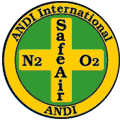Portrait - Helmuth Biechl
Helmuth Biechl has been diving since 1975. Accompanied by the local lighthouse guard Raimondo, he did his first open water dives in
Linosa, a small island south of Sicily. Prior to that he had snorkeled the Mediterranean for many years with just basic equipment - mask,
snorkel, fins, weight belt, and knife (an essential piece of diving equipment at the time). In 1979 he became the youngest diving instructor
at the lifeguard facility, which he performed intensively for the next 10 years. At the same time he became a member of the special diving squad,
an elite team of the disaster management unit, deployed for deep water rescue and recovery operations. Early on Helmuth Biechl was interested in
the educational side of diving and began his professional diving career as an instructor with one of the first diving facilities in Munich (Tauch Bertl).
Since then he had been committed to diving education and taught during the following years at all levels for CMAS, SSI, and PADI. In 1984 as TL***
he was appointed to the Diving Educations Committee of the VIT (Verband Internationaler Tauchschulen) and actively participated locally and abroad
in instructor seminars and exams as a speaker as well as an instructor trainer. Helmuth Biechl was always attracted by niche areas of the diving
industry. In 1987 he completed a hardhat diving course in the Baltic Sea and dived for many years with his own hardhat equipment. He had already
acquired his own oxygen rebreather (Dräger LAR 3) in 1980, which was not a trivial task at the time. A couple years later he became the proud owner
and user of the legendary “Leutnand Lund II” rebreather. He dedicated many years to the application of DPVs (diver propulsion vehicle, Aquazepp) and
explored this way the Bavarian lakes, Gianutri (Italy), Gozo (Malta) and Lipari (Sicily) to extended ranges and depths. He started early to organize
diving safaris and trips into the Mediterranean, the Red Sea and the Maldives. Privately he dived the Bavarian lakes and the Mediterranean Sea with
his own rubber dinghy or Sailboat. From the beginning he was especially interested in extreme deep diving, which frowned upon at the time. In 1998
after reading the book “Technical Diving – Tauchen am Limit” by Mario Weidner he began technical diving, especially deep diving with trimix. At ANDI
(American Nitrox Divers International), one of the largest commercial organizations for technical diving, he was trained predominantly by Harry Wenngatz
from Canada, an internationally known pioneer of the first hour. Later on he became an ANDI instructor for technical diving, first for nitrox and
ultimately for trimix. Over the last couple years Helmuth Biechl taught technical diving at all levels, for users as well as instructors. Today he
is a trimix instructor trainer for open circuit, semi-closed and closed circuit systems, as well as technical wreck diving, solo diving and cavern diving.
From 2005 till 2007 Helmuth Biechl has been country director at ANDI Europe and responsible for consulting diving facilities and instructors in Germany.
In february 2007 he was appointed as Instructor Trainer Director (ITD) and with this he is a permanent member of the highest committee within ANDI.
From 2007 till 2018 he has been a shareholder of ANDI Europe and in this period he has held the position of the Training Director.
Since the year 2018 Helmuth Biechl runs a training facility for technical diving in Gozo/Malta and supports as ITD the Regional Headquarter ANDI
Mediterranean with respect to training matters.
In the year 2000 he began to dive intensively with modern rebreather systems; first with the SCR Dolphin from Dräger, then with the CCR Inspiration of the British
manufacturer Ambient Pressure Diving (APD). Subsequently he added the CCR Classic Kiss from Jetsam, the CCR Megalodon from Innerspace, the PASCR RON
from RON-GER, the mCCR rEvo, the Hammerhead CCR from Juergensen Marine, the COPIS from Innerspace and the Nautilus from Divenautilus.
The intrinsic motivation for trimix diving was the exploration of Deep Wrecks in all parts of the world. Since the year 2000, his entire
interest has been dedicated to Deep Wreck projects. Helmuth Biechl dives in international teams with the best wreck divers in the world, from England,
Ireland, Scotland, France, Italy, Malta, Poland, USA and Canada. In the future he wanted apply himself even more to the exploration of extremely deep
wrecks, laying at the threshold of mixed gas diving. Doing so, he dived in September 2005 together with Michael Klemm and Jean-Marc Belin the deepest
wreck in southern France, the Natal in 130m. In June 2006, together with Tom Jaspers and Roberto Bordin, he dived the Calino in 150m near Capri/Italy.
In August/September 2007 he had the opportunity to dive together with the world’s best wreck divers to the remains of the Carpathia in the North Atlantic
(250sm offshore) in 155m depth. The total dive time of each of the three dives was six hours. The RMS Carpathia is one of the most famous wrecks in the
world. The passenger steamship came to aid of the Titanic in 1912, but was unfortunately sunk by a German torpedo of U-55 in 1918.
Helmuth Biechl is currently working on plans to dive even deeper wrecks beyond the 160m mark. Helmuth Biechl started cave diving in 1979
on the Medas islands in Spain and became a full cave diver with NACD (National Association of Cave Divers) in 2000. On average he has completed about
100 dives a year since 1977 and looks back at about 4000 logged dives.
|




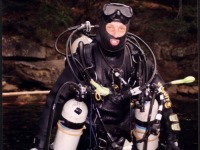

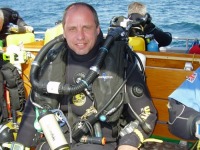



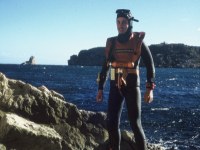

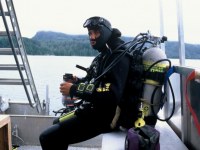
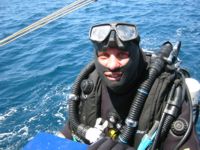
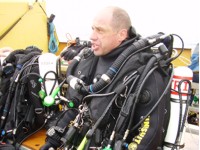
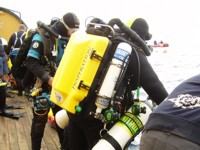
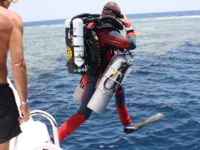
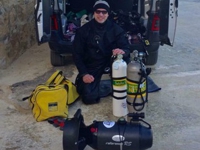
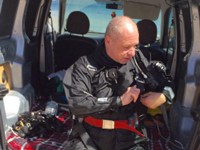
|
|


